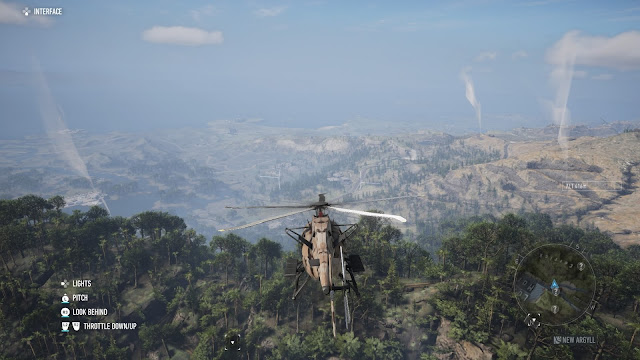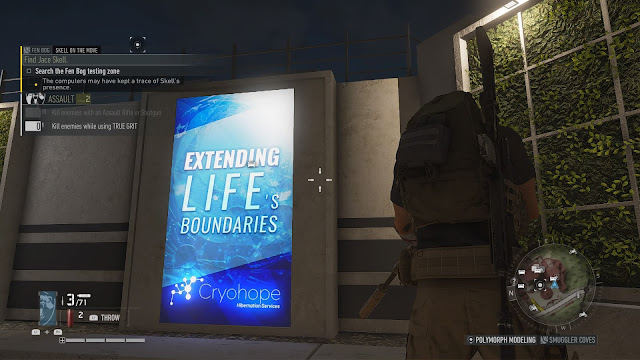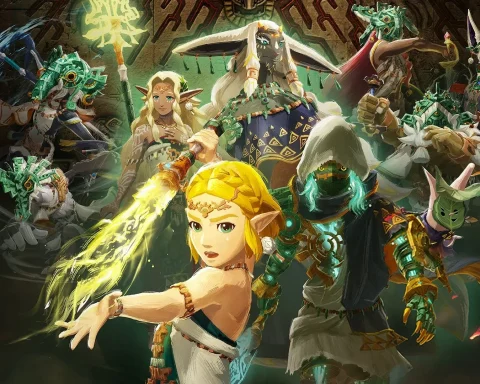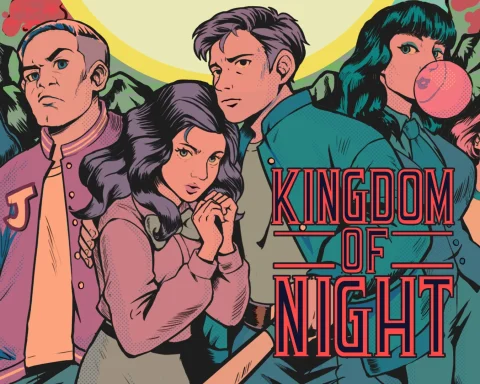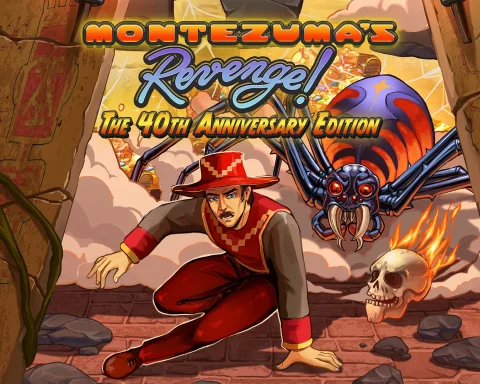Review by Harvard L.
It’s that time of year again – an open-world game from Ubisoft, this time in its Ghost Recon franchise. Breakpoint is a direct sequel to 2017’s Wildlands, and aims to be a more tactical, action focused alternative to the wacky emergent gameplay of last year’s Far Cry 5. The setting is near-future and frighteningly realistic, filled with autonomous weapon drones which change the face of combat. From a gameplay perspective, Breakpoint is an amalgamation of Ubisoft’s house-style: a big world with lots of things to do, a main quest broken up into missions and more guns and enemies than any player could want.
Ghost Recon: Breakpoint sees the player engage on an always-online open-world adventure through a fictional South Pacific island named Auroa, which has been taken over by a rogue military unit named the Wolves – a group who seceded from the United States army. The player is tasked with finding out what happened to the island after all communications went dark, only to have their helicopter attacked and their fireteam scattered across the island with no way off. Soon, they find a base of operations in Erewhon, a secret cave filled with the original dwellers of Auroa in hiding from the Wolves. From here, it’s up to the player to piece together how the island was taken over, who’s controlling the drone system which destroys any attempt to leave, and how the United States army creates problems for itself through the way it treats its soldiers.
Let’s start with what the game does well – this is a Ghost Recon game, which actually does a good job of systemising recon. My favourite mechanic of all is that this game starts off by default in “guided mode”, where destinations are waypointed to the player just like any other open world game. The developers actually suggest you turn this off as soon as the game opens up: all the story missions have little hints on where they take place (an early example is: northeast part of a district, near a visible lighthouse) and it’s always enough information for the player to find on their own. Since the narrative sees your player character stranded on a mysterious island, finding the lay of the land is paramount to the experience. Once you’ve found your destination too, players can launch an aerial drone to scope out where the enemy concentration is. This is a more “standard” open world mechanic, but it does well to highlight that once the player has found their destination, they have a nice enclosed tactical shooter mission ahead of them. By bucking the trend set by other open world games, Ghost Recon: Breakpoint actually has the player doing reconnaissance.
The setting of Auroa also feels much more respectful than Wildlands’ fictional Bolivia. First of all it’s a fictional island south of New Zealand owned by a genius billionaire playboy philanthropist for the use of developing a utopia built on autonomous drone technology (that is: he makes bankroll selling high-tech superweapons to global powers with no feasible use for them). The game’s villain is not a demagogue caricature of a real-world conflict; rather, he’s a rogue member of Ghost Recon’s own squad who has some actually reasonable excuses to be disillusioned with the system the protagonist represents. I gladly see that the writers learned a little from the Wildlands controversy. The “no real-world figures were harmed” ethos feels more genuine in this outing than the last. The island is also enormous but not unmanageably so; environments are differentiated by their topography and enemy density, and the graphical improvements make the locale a delight to explore.
Compared to Wildlands and by virtue of its setting, Ghost Recon: Breakpoint feels more mature, restrained and at times, even melancholic. Whereas Wildlands tasked the player with eliminating a notorious drug cartel as a tiny recon squad in whichever way they saw fit, Breakpoint starts with the squad crash-landing on an island swarming with hostiles, where the player character is not even sure how many operatives are still alive. This is not the jingoistic championing of the American military which Wildlands was – Breakpoint presents multiple scenarios in which the Armed Forces are fallible, and the story is made all the more poignant for it. One of the game’s key mechanics (as poorly implemented as it is, more on that later) is to piece together clues and information in order to figure out who the antagonists are, what are their motivations, where are they hiding and how best to advance. This relative narrative uncertainty creates tension in a way which wasn’t present in Wildlands.
Furthermore, and I’m excited to say this because it so rarely applies to open-world shooters, the game’s narrative tone is complemented by the game’s mechanics and systems. Again the recon-mechanic does a lot of the heavy lifting: because the game is designed to be played with waypoint markers off, there is a genuine sense of being lost and trying to find one’s bearings in between missions. Enemy encampments are so dense that it’s not uncommon to be on the run from one only to find yourself in the sights of another. Aside from enemies, the game feels lonely at times: the main survivors (refugees from Skell Tech and original inhabitants of Auroa) are holed up in Erewhon, and it’s uncommon to meet friendlies while exploring out in the field.
One last mechanic which I’m sure will be much-maligned among players is the Azrael drone which patrols the island as part of its perimeter defence system. If the player notices the red icon on their minimap, they must duck for cover and hide camouflaged in tall grass (more on that later), or the drone will immediately strafe them with gunfire while summoning reinforcements. This is usually more heat than most players can handle, and will at first lead to a few memorable deaths. It reminds me of Far Cry 2’s malaria mechanic – an actively irritating threat which needs to be addressed every half an hour or so, which makes the game’s world more hostile and threatening.
On paper, Ghost Recon: Breakpoints works well. It’s the definition of a safe sequel – keep what works, make it a little darker, and add what other blockbuster titles are doing at the moment to catch some audience overlap. On both the narrative and gameplay fronts we see the developers building upon what they learned from Wildlands. For the most part, I enjoyed my time: it’s same-y, but so is everything like it. The real problems come with the little things: the shortcomings in all the additional parts Ubisoft added in its hulking open-world 2-year-rollout-plan aspirations, which make the package somehow lesser than the sum of its parts.
These are the more-on-that-later’s. Ghost Recon: Breakpoint inherits all the mechanics and systems from Ghost Recon: Wildlands (itself being a fairly unfocused open-world game which was lacking in parts compared to Ubisoft’s own Far Cry series) and tacks on even more. Enemy AI has been improved a little from Wildlands but I still would not call it particularly intelligent. There were moments of brilliance where I saw them perk up to sounds of clanking metal or interact with my drones, but there were also moments when their reaction to the person next to them being shot was to crouch perfectly still with their head exposed. Driving in Wildlands has similarly been improved but not by much; there’s a greater variety in vehicles and there’s less unpredictability when off-roading, but the mountainous roads of Auroa all seem to be winding dirt paths that twist 180 degrees constantly, and I spent a lot of my time driving lost or oversteering off a cliff.
Breakpoint adds RPG-style character progression, traced down to a character’s “gear-level” based on their clothing and weapons. I had no idea what this meant; clothing items don’t purport to offer additional defensive capabilities, they just have a level and some arbitrary static bonuses, but some story missions recommended I avoid them until I was past a certain level so I just went with it. There is also an experience points driven skill tree which is bland: most skills are passives and you can only equip three passives (out of a possible 50-something!) at once, so once you unlock what you want there’s no point bothering with the rest. There is a detective-style system where clues you find in the overworld unlock passage to the next mission – but these are often heavy-handed and glaringly obvious. There is Metal Gear Solid style stealth where you can lie prone in grass and camo yourself, but since enemy AI is so patchy you can rarely tell if it’s working; the result is that sometimes you obscure your own vision until the enemy is right on top of you.
The newer mechanics stirred into Ghost Recon: Breakpoint result in a half-baked and unrewarding package. The player is absolutely bogged down with an enormous, seven-page menu (infuriatingly mapped to mouse-style point-and-click rather than the PS4 controller), and the flick between pages is patchy and laggy for something the player is expected to do all the time. I also take issue with how much the game assumes the player will love collecting and fondling the various firearms. Weapons are named after their real-world counterparts and are balanced to convey realism; but to imitate the looter-shooter genre, every mission or enemy encampment will also contain a weapons cache and a piece of “intel” which will let the player craft an additional weapon. If you really love digital guns then sure, I see the value of this as a more lethal version of Pokemon’s “gotta catch-em all”. For the rest of this this isn’t exactly a rewards system that feels worthwhile.
If you’re a casual shooter player who doesn’t mind whether their weapon shoots 9mm rounds or globules of radioactive plasma, this fixation on realistic weapons makes the game feel flat. It insists on rewarding the player with weapons, even though after a few missions they will not be in any practical need of more weapons. With a looter shooter, weapons are outlandish and different so that players will always be excited to get the next one, not just for a switch-up of gameplay styles, but also an increment in the level of foes they can take on. Breakpoint however, in its aim to be realistic and tactical, makes most human enemies vulnerable to headshots from anything. Thus, despite its huge arsenal of weapons, many remain functionally identical to each other. Three hours in I had five submachine guns. Did the developers really think I would still be excited when the reward for taking out an enemy encampment was a blueprint to craft another submachine gun?
There’s some dreaded ludonarrative dissonance here as well. Setting aside the silliness of a soldier on foot lugging along dozens of weapons on their person, it also doesn’t make sense that guns and crafting blueprints are just found scattered about in the field. Wouldn’t Erewhon be home to a good stash of weapons for our hero? Why are blueprints carried by random patrolling troops? Shouldn’t their loadouts be standardised? And in a bid to make the player even more excited about finding a new weapon, a big image pops up the second the enemy holding it dies, and it immediately appears in your inventory even if you sniped that enemy from half a kilometre away. But the ammo that same enemy dropped needs to be walked over for your character to pick it up. What’s up with that?
The answer to all these questions is, of course, “it’s a game, don’t think about it too much”. Most games I enjoy don’t require me to keep saying this line to myself over and over. And if you’re like me, maybe Breakpoint’s inconsistencies will be too much for you, too. Just be aware that this game is designed to maximise its appeal to a certain crowd, and that crowd seems to be able to reconcile “tactical realistic action simulation” with “it’s a game, don’t think about it too much”.
Once I wasn’t thinking too much, I found quite a bit to enjoy in Breakpoint. Taking out enemy camps is the same as it is in any other game, but the gunplay is at least well designed and feels punchy. Using a drone to scout out the enemy encampment to formulate a plan of attack works well, even if it is exactly what you do in any other recent Ubisoft game. The competitive multiplayer mode Ghost War, a four-on-four skirmish with instant matchmaking, is fun in the same way Counter-Strike or Call of Duty is fun. This is where the game gets its most tactical; with one life for each round and where the drone marking system actually matters, and being able to win rewards for use in the main campaign is a nice plus too. The worst complaint I could make was often that I’d rather be playing something else; but there was rarely anything too broken with Breakpoint itself.
One last side note, there’s been a lot written about the game’s use of microtransactions – I admit there’s a huge amount of ways to spend additional money on the game after the initial purchase. There’s cosmetics, gun upgrades, blueprints, vehicles and more. But whereas in other games these purchases would be largely unnecessary to most players, in Breakpoint – a game which is relatively easy and already shovels more guns and cars into the players’ hands than they could want – I’ve never even felt the slightest impulse to buy anything. Maybe those who really devote themselves to the co-op and competitive multiplayer scene will find some compulsion to flash their bling, but the game is fully playable without them.
The big question is: what, exactly, is the target audience for Breakpoint? I can find things that I personally like, as well as moments I can identify as hat-tips to devoted genre fans. I just think that, in its attempt to be a tactical-action-open-world-sandbox-looter-shooter-online-squad-based-co-op, it collapses under the weight of all the hyphens. The disparate parts which Ubisoft tries to cram together are too different for a coherent game to form. I imagine the hardcore tactical FPS fan doesn’t want looter-shooter mechanics, and vice versa; anyone who likes this Breakpoint for one reason will hate it for some other reason. But at least Ubisoft did make the narrative less egregious this time around.
– Harvard L.
Contributor



